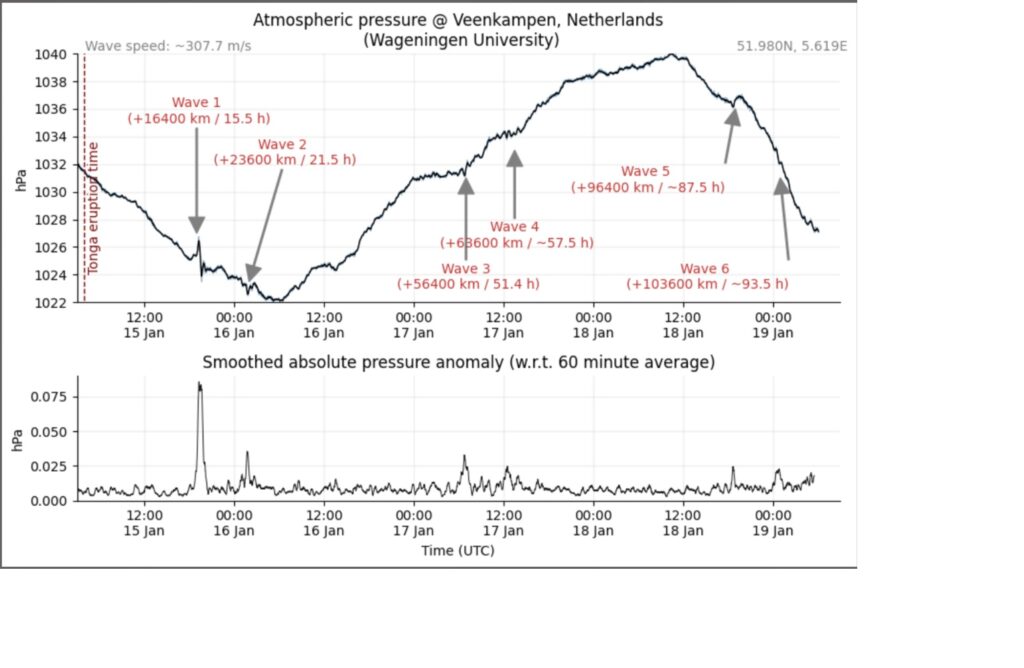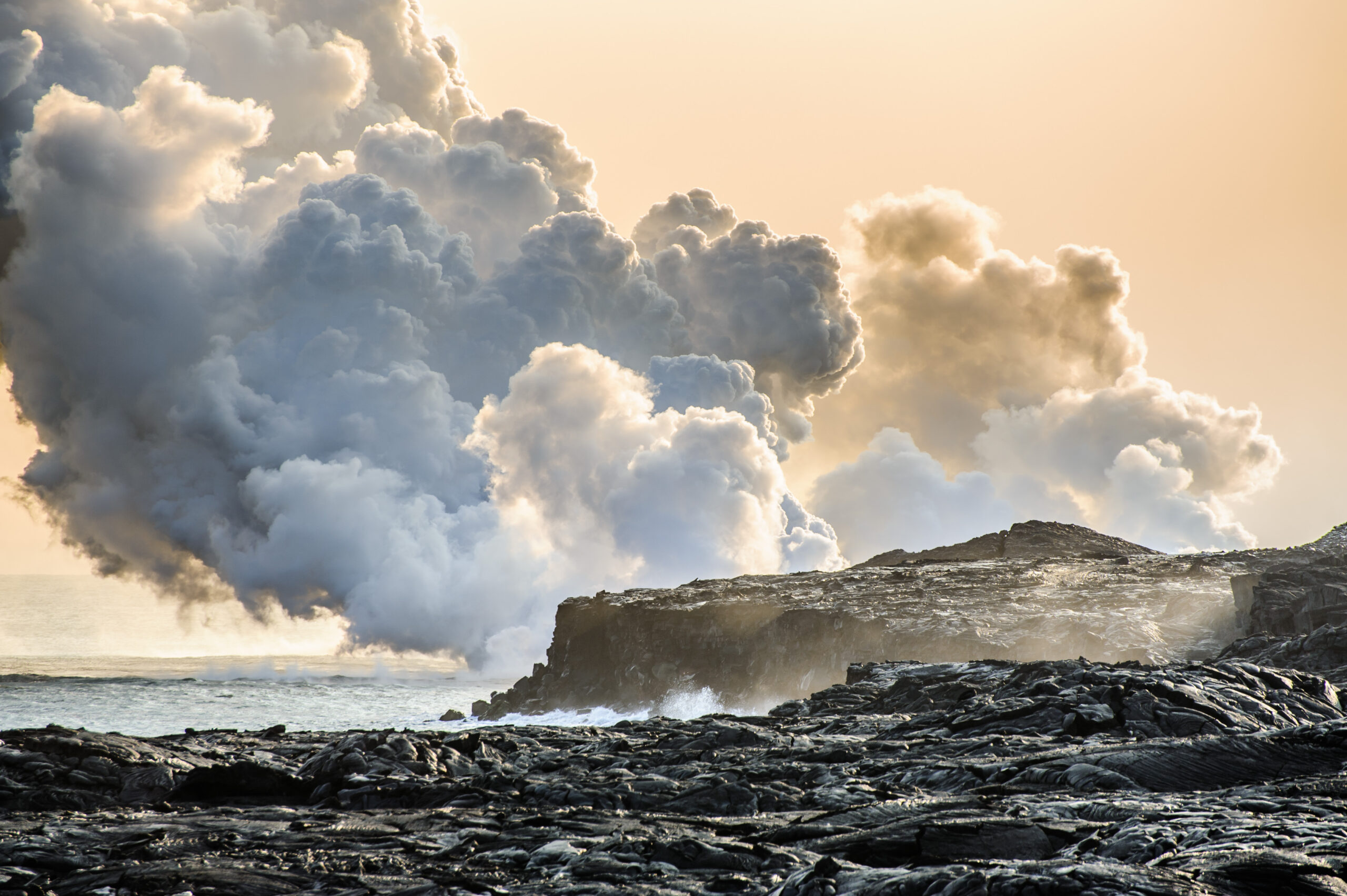The volcanic eruption near the Pacific Island of Tonga on 15 January was deafening. Here, 16,400 kilometres away, not a sound was heard. Or was it? WUR’s Veenkampen weather station in the Binnenveld registered the bang loud and clear. Not just once, but several times as the shockwave travelled the globe.
Amateur meteorologists’ social media platforms reported the shockwave in several different places. ‘Could we have registered it as well?’ PhD-candidate Wouter Mol wondered. The answer was yes. After studying the daily atmospheric pressure graph, it showed a clear spike in addition to the daily fluctuations caused by the weather.

The spike occurred 15.5 hours after the eruption. Given the distance of approximately 16,400 kilometres, this amounts to a travelling speed of 308 m/s. Close to the speed of sound. But, there is a second spike. Slightly lower but still clearly visible. And even more apparent once the graph has been processed and the effect of the pressure fluctuations that result from the weather has been removed.
Opposite direction
That second spike puzzled Mol for a short while. But of course! Sound travels in all directions and thus also entered the Binnenveld from the opposite direction. When the two spikes continued to show up in the following days, the excitement reached its peak. No less than three sets of spikes, showing the wave travelled the globe two and a half times.
‘The wave should have shown up again this morning, but today it disappeared in the noise’, Mol says. Although the readings reveal something about the measuring equipment’s sensitivity, it mainly shows how intense the eruption was. Mol: ‘A blast of this magnitude is quite unique. I’m no expert, but I believe this is a first for this century.’
Krakatau
More to the point, according to experts at the KNMI (Royal Netherlands Meteorological Institute), the blast can be compared to the famous eruption of Krakatau in 1993. Even the eruption of the Pinatubo in 1991 was not this loud. The measuring station in the Binnenveld measures atmospheric pressure, among other things. The eruption also caused waves that travelled through the earth’s surface. These were recorded by KNMI in De Bilt and other stations.

 Photo: Shutterstock
Photo: Shutterstock 

